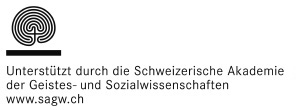Success Stories
Narrative Types in Swedish Journalistic Newspaper Articles About Living with Aphasia
DOI:
https://doi.org/10.47368/ejhc.2021.103Keywords:
aphasia, media representations, newspapers, narrative types, narrative agency, vicarious voice, ethnographic content analysisAbstract
Aphasia is a language impairment caused by acquired brain injury such as stroke. Public awareness about aphasia is low in Sweden as well as internationally. The media is an important source of information on aphasia, but research on how people with aphasia are portrayed in the media is scarce. Therefore, this study aimed to increase the knowledge about media representations of people living with aphasia, by studying Swedish journalistic newspaper articles. It focused on stories in which people with aphasia were included in the discussion rather than merely being the subject of the discussion. Drawing on framing theory and Frank’s typology of narrative types, a qualitative ethnographic content analysis was conducted. Swedish print media material published between 2007 and 2018 was collected and 84 articles were identified for inclusion in the analysis. The overall finding was that, within Swedish journalistic newspaper articles, living with aphasia is framed as a success story. Themes and sub-themes were identified within each narrative type, and we suggest expanding Frank’s typology with humour narratives and necessity narratives. Although several narrative types were identified in the studied articles, the overarching success story frame was predominant.
Downloads
Published
How to Cite
Issue
Section
License
Copyright (c) 2021 Helena Taubner, Malin Hallén

This work is licensed under a Creative Commons Attribution 4.0 International License.
The authors agree to the following license and copyright agreement:
a. Authors retain copyright in their work.
b. Authors grant the European Journal of Health Communication the right of first publication online on the internet (on the publication platform HOPE of the Main Library of the University of Zurich).
c. The electronic contributions on the internet are distributed under the „Creative Commons Attribution 4.0 International“- License (CC BY 4.0). This license allows others to copy and redistribute the work in any medium or format, to remix, transform and build upon the material with an acknowledgement of the work's authorship and initial publication in the European Journal of Health Communication . These conditions are irrevocable. The full text of the license may be read under http://creativecommons.org/licenses/by/4.0/.
d. Authors are able to enter into separate, additional contractual arrangements for the non-exclusive distribution of their work, as long as the conditions of the CC BY 4.0 License are fulfilled and initial publication in the European Journal of Health Communication is acknowledged.
e. Authors grant the Editors commercial rights, using a publishing house, to produce hardcopy volumes of the journal for sale to libraries and individuals, as well as to integrate the manuscript, its title, and its abstract in databases, abstracting and indexing services, and other similar information services.
f. This agreement is subject to possible legal disclosure obligations.
g. This agreement is governed by Swiss law. Court of jurisdiction is Zürich.









